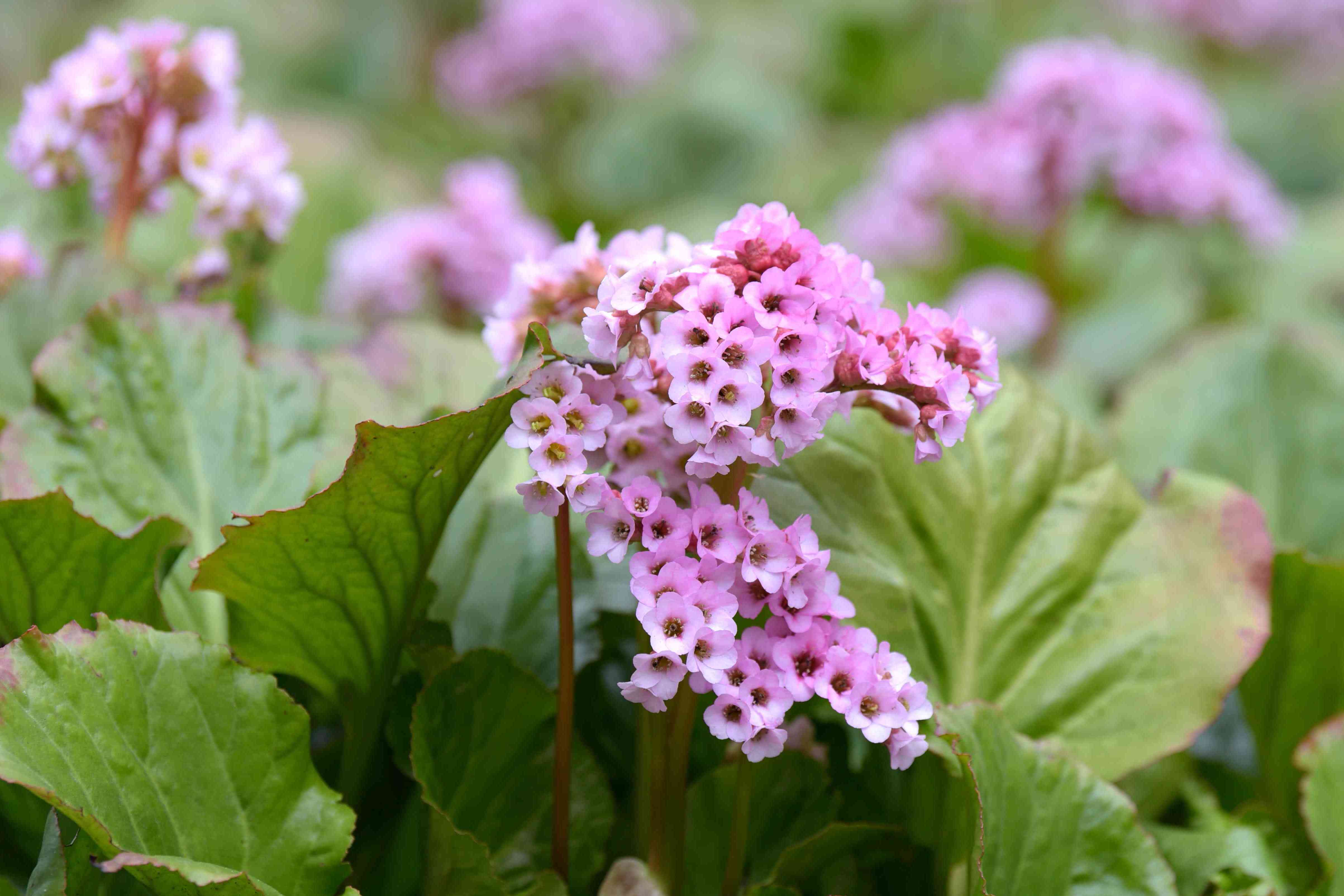
Bergenia, often called "elephant's ears" due to its large, leathery leaves, is a fascinating plant with a lot to offer. Did you know that this hardy perennial is not only beautiful but also incredibly resilient? Originating from the rocky terrains of Central Asia, Bergenia thrives in various climates, making it a favorite among gardeners. Its vibrant blooms can range from pink to deep magenta, adding a splash of color to any garden. But there's more to Bergenia than just its looks. This plant has been used in traditional medicine for centuries, believed to have anti-inflammatory properties. Whether you're a seasoned gardener or just starting, Bergenia is a plant worth knowing about. Ready to learn more? Let's dive into 29 intriguing facts about Bergenia!
What is Bergenia?
Bergenia, also known as elephant's ears, is a perennial plant that belongs to the Saxifragaceae family. Known for its large, leathery leaves and vibrant flowers, Bergenia is a popular choice for gardeners looking to add a splash of color to their landscapes. Let's dive into some fascinating facts about this unique plant.
- Bergenia is native to Central Asia, particularly the Himalayas, and parts of China and Siberia.
- The plant gets its nickname "elephant's ears" due to its large, rounded leaves that resemble the ears of an elephant.
- Bergenia flowers come in various shades, including pink, red, white, and purple.
- The plant is named after the German botanist Karl August von Bergen.
- Bergenia is known for its hardiness and can survive in USDA zones 3-8.
- The leaves of Bergenia turn a beautiful bronze or red color in the fall, adding seasonal interest to gardens.
- Bergenia is often used as ground cover due to its dense foliage and spreading habit.
- The plant prefers partial shade but can tolerate full sun in cooler climates.
- Bergenia is relatively low-maintenance and drought-tolerant once established.
- The plant produces clusters of bell-shaped flowers on tall stems in early spring.
Uses and Benefits of Bergenia
Bergenia is not just a pretty face in the garden; it has several practical uses and benefits. From medicinal properties to ecological advantages, Bergenia is a versatile plant worth knowing more about.
- Bergenia has been used in traditional medicine for its anti-inflammatory and diuretic properties.
- The plant's roots contain bergenin, a compound with potential health benefits.
- Bergenia can help prevent soil erosion due to its extensive root system.
- The plant attracts pollinators like bees and butterflies, promoting biodiversity in gardens.
- Bergenia can be used in rock gardens, borders, and as edging plants.
- The plant's thick leaves can suppress weed growth, reducing the need for chemical herbicides.
- Bergenia is deer-resistant, making it a good choice for gardens in areas with high deer populations.
- The plant can be propagated easily through division, allowing gardeners to expand their Bergenia collection.
- Bergenia can be grown in containers, making it suitable for small gardens or patios.
- The plant's flowers can be used in floral arrangements, adding a touch of elegance to indoor spaces.
Growing and Caring for Bergenia
Growing Bergenia is relatively straightforward, but there are a few tips and tricks to ensure your plant thrives. Here are some essential facts about growing and caring for Bergenia.
- Bergenia prefers well-drained soil with a slightly acidic to neutral pH.
- The plant should be watered regularly during its first growing season to establish a strong root system.
- Mulching around the base of the plant can help retain moisture and regulate soil temperature.
- Bergenia benefits from a balanced, slow-release fertilizer applied in early spring.
- Deadheading spent flowers can encourage more blooms and prevent the plant from self-seeding.
- Pruning old or damaged leaves can improve the plant's appearance and health.
- Bergenia can be divided every 3-5 years to maintain its vigor and prevent overcrowding.
- The plant is relatively pest-free but can be susceptible to slugs and snails.
- Bergenia can tolerate light frost, but heavy frost may damage the leaves. Protecting the plant with a layer of mulch can help it survive harsh winters.
Bergenia: A Plant Worth Knowing
Bergenia isn't just another plant in the garden. Its hardy nature, vibrant blooms, and medicinal properties make it a standout. Whether you're a seasoned gardener or a newbie, adding Bergenia to your garden can bring both beauty and benefits. Its ability to thrive in various conditions means less fuss and more enjoyment. Plus, the unique foliage provides year-round interest, even when the flowers aren't in bloom.
Beyond aesthetics, Bergenia has a rich history in traditional medicine. From treating respiratory issues to soothing inflammation, this plant has been a go-to remedy for centuries. So, next time you're planning your garden or looking for natural remedies, consider Bergenia. It's more than just a pretty face; it's a versatile, resilient, and beneficial addition to any space. Happy gardening!
Was this page helpful?
Our commitment to delivering trustworthy and engaging content is at the heart of what we do. Each fact on our site is contributed by real users like you, bringing a wealth of diverse insights and information. To ensure the highest standards of accuracy and reliability, our dedicated editors meticulously review each submission. This process guarantees that the facts we share are not only fascinating but also credible. Trust in our commitment to quality and authenticity as you explore and learn with us.
